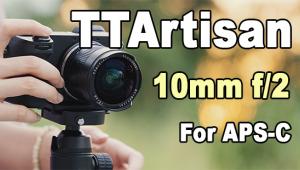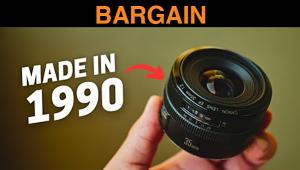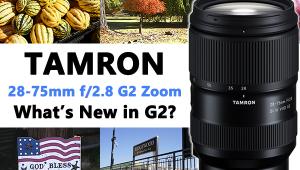Longer Focal Length Macros; Get Up Close From Far Away
My first macro lens was the popular Nikon 60mm Micro-Nikkor. Good move, I thought, as the 60mm focal length could double as an all-purpose lens for a variety of assignments. Trouble is, when I started to get into more and more 1:1 (life-size) work, I only had 21/2" of working space between the front of the lens and my subject. The 105mm was next, sharp as a tack but again, at 1:1, I was limited to only 5" of practical working distance. For outside work where the 1:1 ratio was not that important or the need for lights was not imperative, that resolved the issue and I kept the lens.
 |
|
|
However, the real revelation came with the Nikon 200mm Micro-Nikkor lens. Often hailed as being one of the sharpest 35mm lenses in existence, working distance increased twofold to 91/2", which gave me plenty of room for supplementary lighting on either side of the camera, useful for working with flash outdoors and especially for commercial work in the studio.
 |
|
|
Another benefit of longer focal length macro lenses is that they offer a narrow angle of view that helps isolate the subject. Pitted against a 60mm macro lens, the 200mm offers almost four times the magnification and a longer working distance when taking a photograph, which helps to simplify the surroundings behind the subject and get rid of busy backgrounds or unwanted clutter.
 |
|
|
Macro lenses are specialty glass. For example, Nikon offers its famed ED glass on their 200mm macro, which helps correct chromatic aberrations and delivers sharpness, contrast, and clarity even at maximum aperture. It also features a close-range correction system, where lens groups actually float within the lens barrel to help ensure the ultimate in sharpness even at very close distances. For handling in the field, the lens has a rotating tripod collar for not only a secure and stable mounting platform, but also as a balance point away from the camera, useful for time exposures on the tripod and the ease of going from horizontal to vertical without the need for special camera adapters.
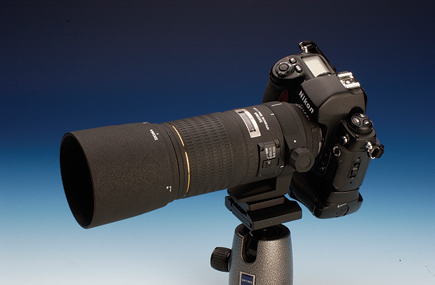 |
|
|
Macro Lens Specs
For true life-size close-ups you'll want to purchase a lens that will focus down to a 1:1 range with no additional attachments or add-on lenses. You will also want the close-up ratios marked on the lens barrel for later reference or field notes. For example, the Canon 180mm macro lens goes from 1:10 (moderate close-ups at about 7 ft) to a full 1:1 ratio at 91/2" to the front element. In between all this the lens is marked from 1:10 in increments of 1:5 (4 ft), 1:3 (33"), 1:2 (30"), 1:1.8 (28"), 1:1.4 (22"), 1:1.2 (20"), and 1:1 (18"). Please keep in mind that these measurements are not to the front element of the lens but to the film or sensor (9" working distance plus the length of the lens and depth of the camera body equals 18") plane of your camera.
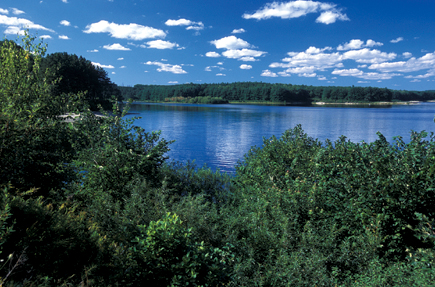 |
|
|
Autofocus is a nice feature to have when not using the lens in a Macro mode, but for accurate focusing on your subject, especially if it's out of range of a focusing sensor, I prefer to use the lens on Manual. Depth of field plays a big part in all of
your close-up photography. For instance, using the Nikon 200mm Micro-Nikkor at a 1:1.3 ratio with the lens stopped down to f/16 yields a range of sharpness from 227/16 to 229/16"!
 |
 |
||
|
|
Long Macro Lens Choices
Most manufacturers offer a long macro choice in their lines. The Canon 180mm f/3.5 checks in at a hefty 3 lbs with an overall length (without the lens hood) of 7". With a minimum aperture of f/32 and a filter size of 72mm, a step-up ring will accommodate 77mm filters as well.
 |
|
|
Nikon has a nice pair of Micro-Nikkors with my all-time favorite being the 200mm f/4 lens. Expensive at best, sharp as all get out, sporting an overall length of 8", and weighing around 43.0 oz (2.68 lbs), you'll find the lens goes down to a true 1:1 ratio with a working distance of 9" as measured to the front element. A standout feature is the smooth operating tripod collar complete with a locking knob that is large enough to operate with or without winter gloves.
- Log in or register to post comments
